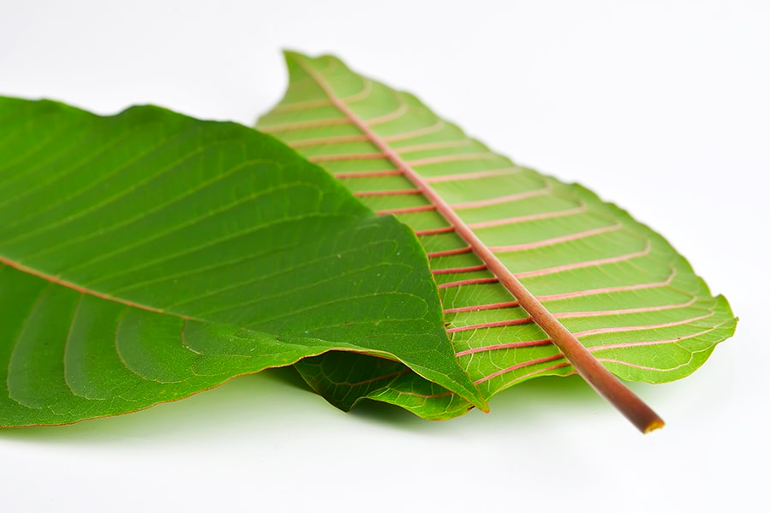Most plants develop into many varieties out of a single species. Just as there are different types of lilies that might grow in your garden, different Kratom types grow in the world. Variation in how the plants grow, where they grow, and how they are harvested leads to various Kratom strains appearing on the market.
One of the broadest ways to define these Kratom variations is by color: why are there different Kratom colors? Kratom enthusiasts often find they prefer certain colors of Kratom, but they aren’t always aware of why the colors exist at all.
Today, learn more about Kratom color variation, where it comes from, and how the powders differ because of this variation.
Kratom: What Is The Plant?
To get a better idea of how strains make a difference when it comes to Kratom, it’s best to start with some base knowledge of the plant itself.
Kratom is a type of evergreen tree native to Southeast Asian regions, including Malaysia, Borneo, Indonesia, Vietnam, Thailand, and Papua New Guinea. The hot, humid climates in these locations pair with highly fertile soil to make a perfect growing environment for Kratom.
The botanical product comes from the leaves of the Kratom trees. Kratom leaves are harvested, dried, and processed to make Kratom powder and other Kratom-based products. Kratom may interact but not bind with important receptors in the body, potentially leading to beneficial effects.
What Are Alkaloids?
Before getting into more specifics of different Kratom color strains, it’s essential to understand a bit more about alkaloids.
Alkaloids are found in many plants, not just in Kratom leaves. Caffeine is an alkaloid found in coffee beans and some tea leaves, for example. Alkaloids each react with the body differently, and each of these reactions can cause different physiological or psychological effects.
Kratom is known to contain more than 40 different alkaloids, and these alkaloids appear in different concentrations. The concentration varies for many reasons:
- • Growing conditions
- • Growing season
- • Time of harvesting
- • How they are harvested
- • How the leaves are dried
- • Soil composition
- • Weather patterns
Individual alkaloids found in Kratom are being studied to learn more about their specific effects when consumed. Two compounds, however, are currently attributed for most of the effects seen with Kratom use: mitragynine and 7-hydroxymitragynine.
As the two most common alkaloids, the composition percentage of these two chemical compounds is written Kratom labeling for consumer knowledge.
Different Colors, Different Strains
As mentioned above, the exact chemical composition of Kratom varies depending on a wide variety of factors. The changes in those factors create the range of Kratom strains that we see on the market today.
Just as tea leaves are harvested at different times or ways to establish variety, the same can be done when Kratom leaves are harvested.
The simplest way to categorize Kratom strains is by their color. Kratom is found in red, green, yellow, and white varieties. Much of the distinction between these color strains lies in the number of alkaloids in each of them. Still, there are some other important distinctions to point out. Let’s find out more about the color strains and where they come from.

Red Vein Kratom
When Kratom leaves are harvested at full maturity, these leaves are known as red vein Kratom.
At this point in the growth cycle, Kratom leaves begin to put less energy into overall tree growth, and more of that energy stays in the leaves. This causes changes in the chemistry of the leaves and affects the balance of alkaloids in them.
Red vein Kratom has a mellow profile that is exceptionally high in the alkaloid Mitragynine. These leaves’ earthy tone sometimes looks brown in appearance; most see its color as a dark, muddy green.
Yellow Vein Kratom
Yellow vein Kratom is dried through a small-batch process that was initially popular in Vietnam and Thailand. The leaves selected for this process are typically mature, green leaves rich in alkaloids.
Here’s how the leaves are then processed:
- 1.) Green leaves are spread out evenly on drying racks.
- 2.) For several days, the leaves are left in direct sunlight.
- 3.) The sunlight breaks down the chlorophyll in the leaves, which causes the leaves to begin to yellow.
- 4.) The process is stopped after the leaves dry. Timing variation means there is a good variety in the number of potential yellow strains.
As you can see, harvesting and processing yellow vein Kratom is particularly time-intensive.
Green Vein Kratom
Green veins have one of the most balanced alkaloid profiles of all strain colors of Kratom.
To make green vein Kratom, leaves are typically harvested after budding is completed, before the leaves have completely matured. This created the vibrant color seen in the final processed form of green vein Kratom. Most green vein varieties contain a wide array of alkaloids but are very balanced in each alkaloid’s amounts because of the leaves’ age.
White Vein Kratom
White Vein Kratom is harvested earlier in the growing process than any other color of Kratom. Leaves that are still growing are harvested from Kratom trees and then allowed to dry. This process causes the alkaloid 7-hydroxymitragynine to be present in higher concentrations than in any other color strain.
While it is called white vein Kratom, the color of this Kratom powder is typically a light tan.
Find Reliable Strains At LCK
Left Coast Kratom offers various color strains for our customers, and each is a unique blend with different concentrations of alkaloids! Whether you’re looking for a completely balanced profile or something high in a specific alkaloid, we can offer something that fits your needs.
Our company prioritizes the safety and reliability of our products. As a GMP-compliant company, we do our part to have our products tested for safety with a third-party agency. If you have any questions about colors or the strains in our catalog, please contact us!


